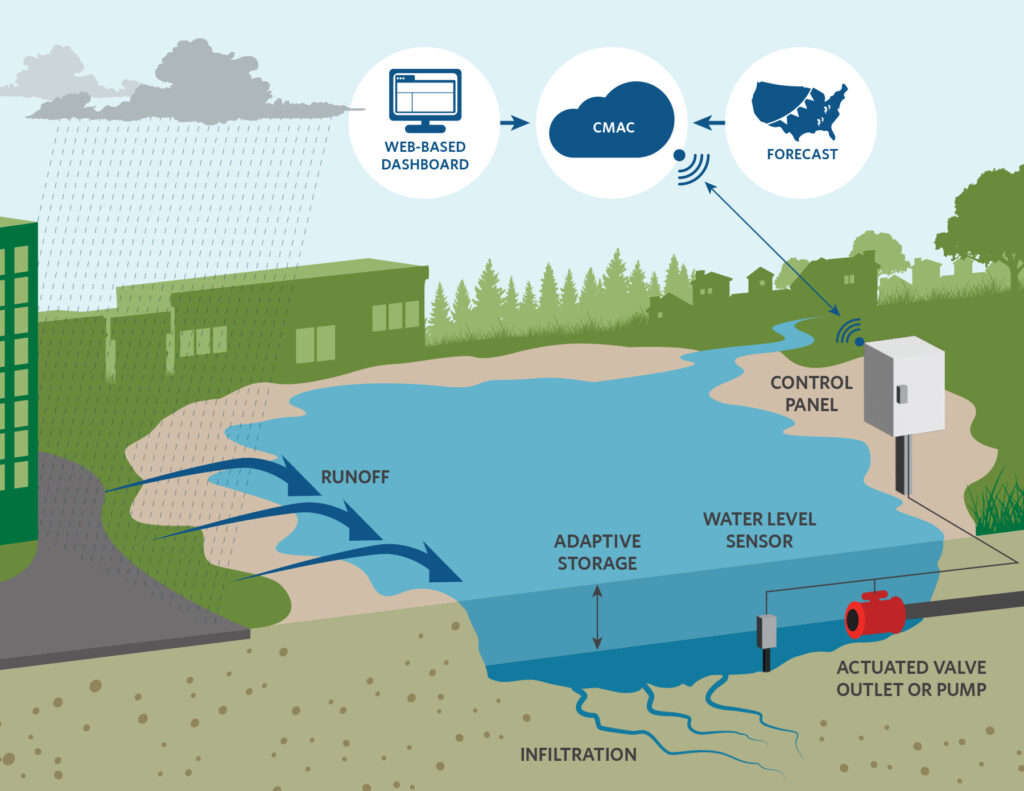We’ve collaborated with Opti, a pioneer in the emerging industry of software-enhanced stormwater management, to develop ‘smart’ stormwater retention ponds for our clients. These ponds use Opti’s onsite sensors and cloud-based technology.
Traditional stormwater ponds—one of the most common approaches to treat runoff—number in the millions across the U.S. By integrating our clients’ previously developed land assets with Opti’s predictive technology, we can create vital infrastructure for climate resilient communities.
The Technology
Analyzing weather forecasts, Opti’s systems can proactively and autonomously control a stormwater pond’s water levels, holding runoff for longer periods and releasing it at slower flow rates.
Flows are thereby managed in ways that more closely mimic natural conditions, improving habitat for plants and wildlife and reducing downstream erosion—often by 50 percent or more.
Smart stormwater ponds also can be emptied before significant rainfall to create more flood storage, thereby reducing flood risk for communities.

Simple to install and cheaper than new construction, smart pond technology generates saleable credits under regulatory markets nationwide.
Smart stormwater ponds improve water quality in two ways:
- Plants and soil in these ponds filter excess nutrients that degrade water quality and can be toxic to people and animals.
- More time in the ponds allows other pollutants—like heavy metals from cars, sediment, pesticides, herbicides or cleaning chemicals—to settle to the bottom, which is periodically dredged and the polluted dredge materials safely disposed.
Our award-winning projects retrofitting stormwater retention ponds with smart technology deliver the following benefits:
- 15-60 million gallons of runoff treated annually per project.
- Up to 90% reduction in stormwater-related pollutants, which improves both water quality and downstream habitat.
- Increased flood capacity using existing assets at less than 50% of the cost to build new flood storage.
- Up to 75% reduction in peak flows and 50% reduction in erosive flows, both of which better mimic natural hydrology to improve water quality and enhance downstream habitat.

How smart water ponds work
Watch a short flyover video (below) of a stormwater retention pond that Brightstorm and partners retrofitted with smart technology at Hagerstown, Maryland to help improve water quality in the Chesapeake Bay.


